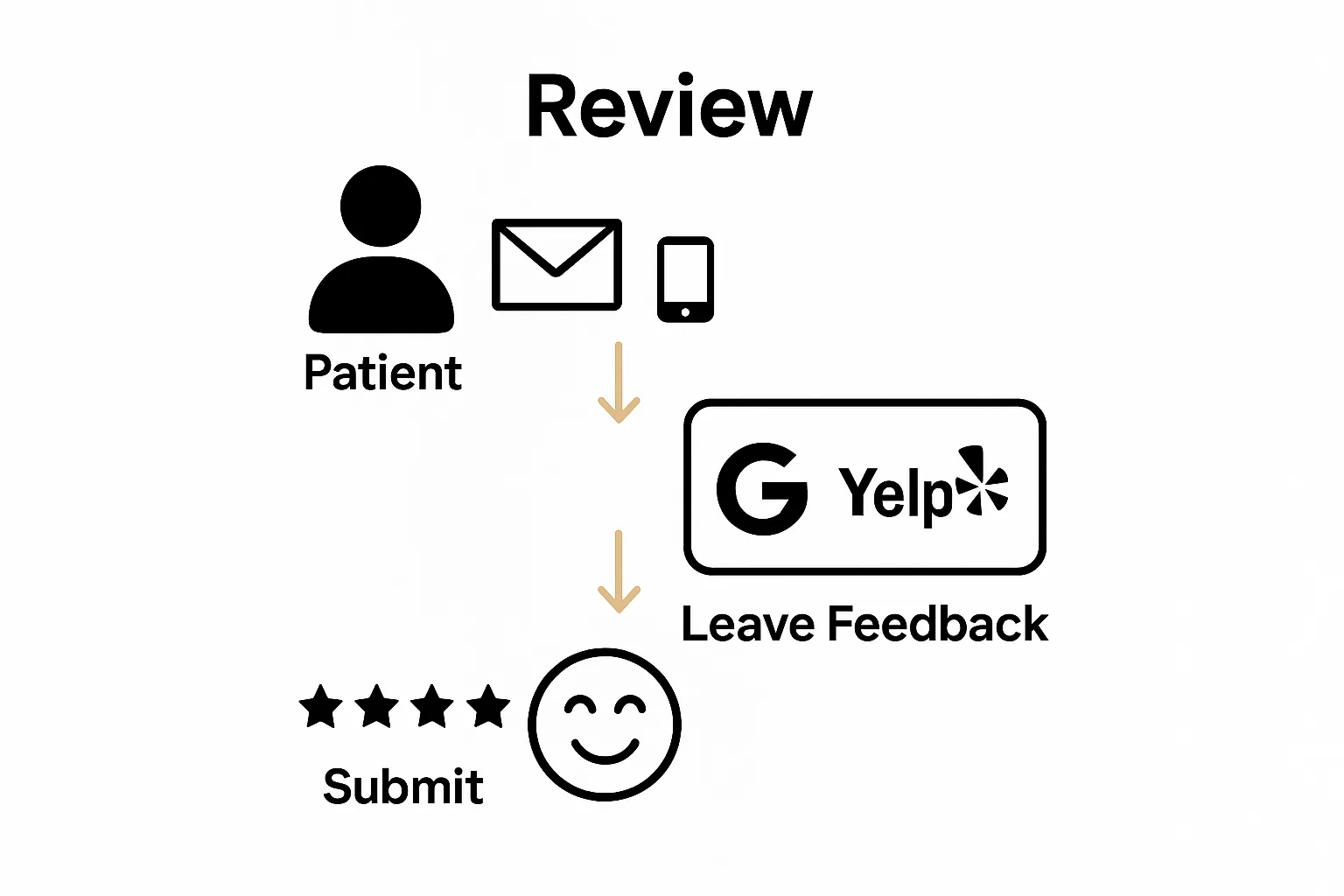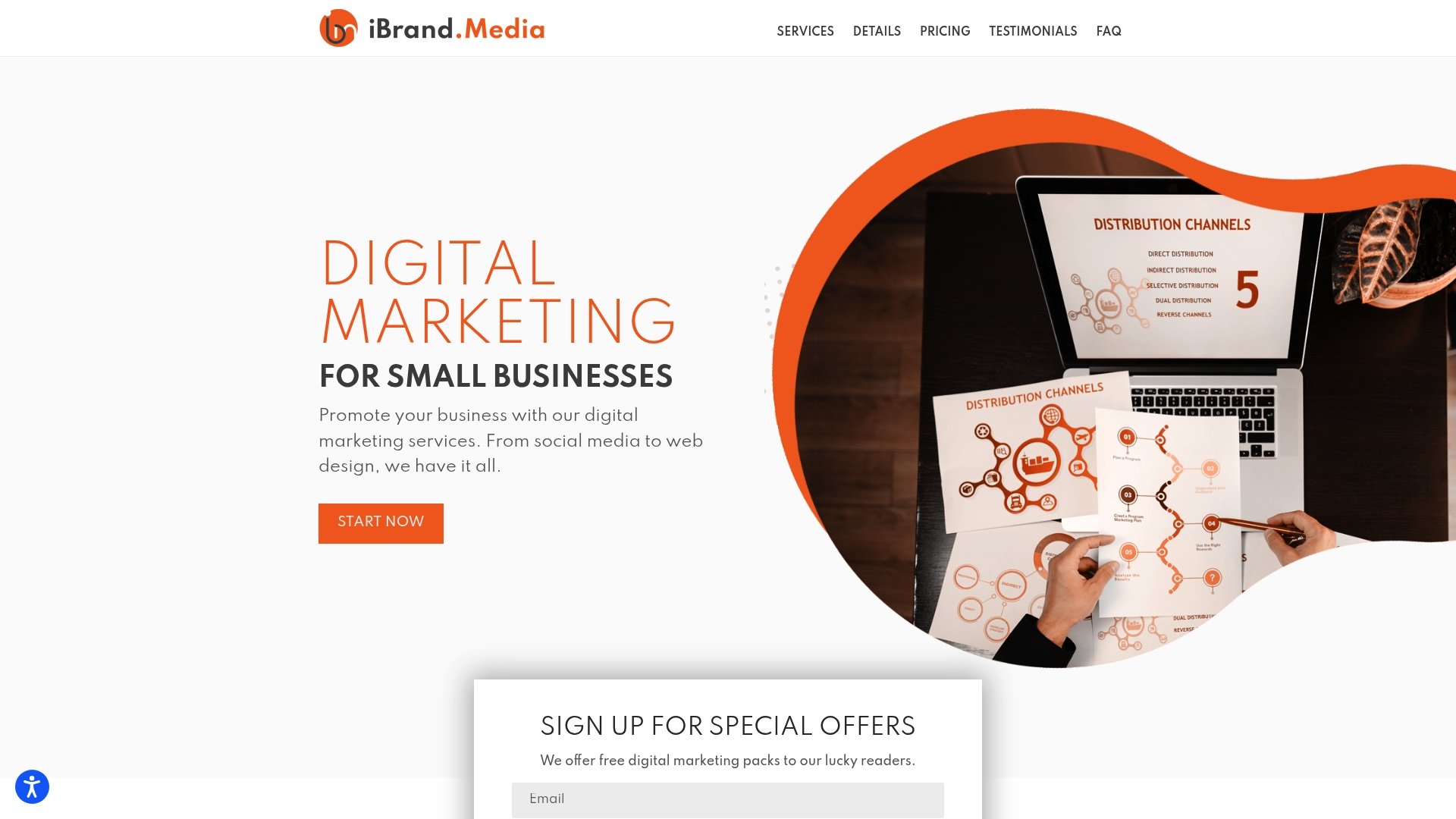Dental practices are finding that a patient’s first impression is made online long before anyone sits in the dentist’s chair. More than 70 percent of patients now check online reviews before they ever book an appointment. That seems like a simple popularity contest but what really matters is not your star rating. It is how you handle each review—positive or negative—that can make or break your reputation.
Table of Contents
- Step 1: Assess Your Current Online Reputation
- Step 2: Identify Key Review Platforms For Dentists
- Step 3: Develop A Response Strategy For Reviews
- Step 4: Encourage Positive Feedback From Patients
- Step 5: Monitor And Maintain Your Online Presence
Quick Summary
| Key Point | Explanation |
|---|---|
| 1. Assess Your Online Reputation | Start by auditing your digital presence on platforms like Google and Yelp to understand existing feedback. |
| 2. Choose Relevant Review Platforms | Focus on key platforms like Google My Business and Healthgrades to ensure visibility where patients search. |
| 3. Implement a Review Response Strategy | Develop structured templates for responding to positive and negative reviews, ensuring timely and professional communication. |
| 4. Encourage Patient Feedback Actively | Prompt patients for reviews post-visit to increase positive feedback and enhance your online presence. |
| 5. Monitor Your Online Presence Regularly | Set up monitoring tools and conduct quarterly audits to keep your information accurate and maintain a strong digital reputation. |
Step 1: Assess Your Current Online Reputation
Managing your online reputation starts with a comprehensive understanding of your current digital presence. For dental practices, this initial assessment is crucial because potential patients frequently research and evaluate healthcare providers online before scheduling appointments. Learn more about managing your digital reputation with strategic insights tailored for local businesses.
Begin by conducting a thorough audit of your digital footprint across multiple platforms. Search your practice name on Google, review sites like Yelp, Healthgrades, and Google My Business. Document every existing review, comment, and mention. Look beyond just star ratings and read the actual content of reviews to understand patient perceptions and potential areas for improvement.
Analyzing Review Landscapes
Carefully examine the sentiment and specific details in patient reviews. Negative reviews aren’t just criticisms they are opportunities for improvement. Pay attention to recurring themes such as wait times, staff friendliness, treatment effectiveness, or communication quality. Some reviews might highlight systemic issues in your practice that need addressing, while others could be isolated incidents.
Utilize professional reputation tracking tools to streamline this process. Platforms like Reputation.com or BirdEye can aggregate reviews across multiple sites, providing a centralized dashboard for monitoring your online reputation. These tools often offer sentiment analysis and alert systems to help you respond promptly to new reviews.
Key verification for completing this step includes:
- A comprehensive spreadsheet documenting all online reviews
- Clear categorization of review sentiment (positive, neutral, negative)
- Identified patterns or recurring feedback themes
- List of platforms where your practice is currently reviewed
Remember, this assessment isn’t about perfection but understanding. Your goal is to create a clear snapshot of your current online reputation, setting the foundation for strategic improvements in subsequent steps of online reputation management.
Below is a checklist summarizing the key verification criteria to successfully assess your current online reputation, ensuring no important step is missed.
| Verification Task | Description |
|---|---|
| Review Documentation | Create a spreadsheet of all online reviews |
| Sentiment Categorization | Mark reviews as positive, neutral, or negative |
| Identify Feedback Patterns | Highlight recurring themes or concerns |
| Platform Inventory | List all platforms with patient reviews |
Step 2: Identify Key Review Platforms for Dentists
After assessing your current online reputation, the next critical step is strategically identifying the most relevant review platforms for dental practices. Explore our guide on dental practice online marketing to understand how targeted platform selection can transform your digital presence.
Dental practices must focus on platforms where potential patients actively search for healthcare providers. Google My Business remains the primary platform, serving as the first digital touchpoint for most patients seeking dental services. This platform not only displays reviews but also provides essential practice information like location, contact details, and operating hours.
Strategic Platform Selection
Beyond Google, specialized healthcare review sites play a crucial role in your online reputation management. Platforms like Healthgrades, Yelp, and RateMDs are specifically designed for medical and dental professionals. According to recent healthcare research, these platforms significantly influence patient decision making, with over 70% of patients consulting online reviews before selecting a healthcare provider.
Expand your platform coverage by considering social media channels and local business directories. Facebook Business Pages and Nextdoor offer community-focused review environments where local patient recommendations carry substantial weight. Additionally, platforms like Zocdoc cater specifically to healthcare providers, offering detailed patient feedback and booking capabilities.
Key verification criteria for completing this platform identification step include:
- Comprehensive list of review platforms relevant to dental practices
- Active profiles established on minimum 4-5 key platforms
- Verified account ownership and access credentials
- Initial review of existing content and ratings on each platform
Remember that platform selection is not a one time task.
Here is a table comparing key review platforms for dentists, outlining their primary audiences and main features to help prioritize where to focus your reputation management efforts.
| Platform | Audience Focus | Key Features |
|---|---|---|
| Google My Business | General public | Reviews, practice info, directions |
| Healthgrades | Healthcare seekers | Physician ratings, detailed feedback |
| Yelp | Local consumers | Business ratings, consumer reviews |
| RateMDs | Patients seeking care | Doctor ratings, patient testimonials |
| Facebook Business | Local communities | Community reviews, practice messaging |
| Nextdoor | Neighborhood members | Local recommendations, neighbor reviews |
| Zocdoc | Healthcare patients | Verified reviews, booking capabilities |
Step 3: Develop a Response Strategy for Reviews
Crafting a strategic approach to responding to online reviews is essential for maintaining a positive digital reputation. Discover why online reputation matters for small businesses and understand the critical role of proactive communication.
Your review response strategy should be systematic and professional. Every review requires a thoughtful approach, whether it’s a glowing recommendation or a critical complaint. According to healthcare communication research, patients value transparency and genuine engagement more than perfect ratings.
Begin by establishing clear response guidelines for your dental practice. Positive reviews demand acknowledgment that goes beyond a simple thank you. Personalize your response by mentioning specific details from the review, demonstrating that you carefully read and appreciate patient feedback. For instance, if a patient praises a particular staff member or treatment, directly reference those elements in your reply.
Handling negative reviews requires a more nuanced approach. Resist the urge to become defensive or argumentative. Instead, craft responses that show empathy, professionalism, and a genuine commitment to resolving patient concerns. Start by thanking the patient for their feedback, acknowledge their specific experience, and invite further discussion offline. Provide contact information or a direct method for addressing their concerns privately, which demonstrates your practice’s dedication to patient satisfaction.
Key verification criteria for developing a robust review response strategy include:
- Documented response template for positive reviews
- Documented response template for negative reviews
- Clear protocols for who responds to reviews and when
- Established timeline for review response (ideally within 24-48 hours)
- Tracking mechanism to monitor review response effectiveness
Implement a consistent communication rhythm across all platforms. Set up notifications or use reputation management tools that alert you to new reviews immediately. This proactive approach ensures no patient feedback goes unacknowledged, helping build trust and showing potential patients that your dental practice values open communication and continuous improvement.
Use the table below as a checklist to confirm all critical elements are in place when developing your practice’s review response strategy.
| Requirement | Description |
|---|---|
| Positive Review Template | Standard response for positive patient feedback |
| Negative Review Template | Standard approach for addressing complaints |
| Response Protocols | Guidelines for who responds and response timing |
| Review Tracking Mechanism | System for monitoring response effectiveness |
| 24-48 Hour Response Goal | Timely replies to patient reviews |
Step 4: Encourage Positive Feedback from Patients
Encouraging patient feedback is a strategic approach to building your dental practice’s online reputation. Learn why online reputation is crucial for small businesses and understand the power of proactive patient engagement. According to healthcare communication research, patients are significantly more likely to leave reviews when directly prompted by their healthcare provider.
Develop a systematic approach to soliciting patient reviews that feels natural and unobtrusive. The most effective strategies integrate review requests seamlessly into your patient experience. Immediately after a positive treatment or interaction, train your staff to verbally encourage patients to share their experiences online. Provide clear, simple instructions on how to leave a review, potentially offering a quick QR code or short link that directs patients directly to your preferred review platforms.
Technology can dramatically simplify the review collection process. Implement automated follow-up systems through email or text messages that are sent 24-48 hours after a patient’s appointment. These messages should include personalized thank-you notes and direct links to review platforms. Consider using patient management software that integrates review request features, allowing you to track and manage these communications efficiently.
Create multiple convenient pathways for patients to share their experiences.
 Display QR codes in your waiting area, include review links on post-treatment documentation, and mention review opportunities during check-out. Some practices find success with tablet stations in the office where patients can quickly leave a review before departing. The key is to make the process as simple and frictionless as possible.
Display QR codes in your waiting area, include review links on post-treatment documentation, and mention review opportunities during check-out. Some practices find success with tablet stations in the office where patients can quickly leave a review before departing. The key is to make the process as simple and frictionless as possible.

Key verification criteria for establishing a robust patient feedback system include:
- Documented review request protocol for staff
- Automated follow-up communication system
- Multiple review platform links readily available
- Tracking mechanism for review generation rates
- Staff training on review request techniques
Remember that authenticity is paramount. Never attempt to manipulate reviews or create fake feedback. Patients can quickly identify inauthentic content, which can damage your practice’s reputation more severely than a few negative reviews. Focus on delivering exceptional patient care, and the positive reviews will naturally follow.
The table below provides a concise checklist for establishing a robust patient feedback system in your dental practice.
| Item | Purpose |
|---|---|
| Staff Review Request Protocol | Guides staff on when and how to ask for reviews |
| Automated Follow-Up System | Sends timely review requests to patients |
| Multiple Platform Links | Makes it easy for patients to leave feedback |
| Review Generation Tracking | Monitors success of feedback solicitation |
| Staff Training on Techniques | Ensures consistency and professionalism |
Step 5: Monitor and Maintain Your Online Presence
Maintaining a robust online presence requires consistent attention and strategic monitoring. Learn about managing your business listings effectively to ensure your dental practice remains visible and reputable. According to healthcare communication research, routine monitoring helps practitioners quickly identify and address potential reputation challenges before they escalate.
Implement a comprehensive digital monitoring system that tracks your practice across multiple platforms simultaneously. Utilize reputation management tools like Google Alerts, Mention, or specialized dental practice platforms that aggregate reviews and online mentions. These tools can send real-time notifications whenever your practice name is mentioned online, allowing you to respond promptly and maintain control of your digital narrative.
Develop a structured approach to regular online profile maintenance. Audit your business listings quarterly to ensure all information remains current and accurate. Check details like practice address, contact numbers, operating hours, and service descriptions across Google My Business, Yelp, Healthgrades, and other relevant platforms. Inconsistent or outdated information can confuse potential patients and negatively impact your search rankings.
Establish a routine for updating your online profiles with fresh content. Regularly refresh your practice photos, add new patient testimonials, and share recent achievements or community involvement. These updates signal to potential patients that your practice is active, engaged, and transparent. Consider creating a content calendar that helps you systematically plan and execute these profile updates, ensuring a consistent and professional online presence.
Key verification criteria for maintaining your online presence include:
- Documented monitoring schedule for online platforms
- Quarterly audit of business listing information
- List of active reputation management tools
- Tracking mechanism for online mentions and reviews
- Established response protocol for new online content
Remember that online reputation management is an ongoing process. What works today might need adjustment tomorrow. Stay adaptable, continuously educate yourself about new digital marketing trends, and remain committed to representing your dental practice with professionalism and integrity across all digital channels.
Below is a maintenance checklist to help ensure your dental practice’s online presence stays accurate and professional across relevant digital channels.
| Task | Purpose |
|---|---|
| Monitoring Schedule | Ensures regular reviews of online platforms |
| Quarterly Business Listing Audits | Keeps practice information accurate |
| Use of Reputation Tools | Aggregates reviews and alerts for quick response |
| Online Mention & Review Tracking | Monitors ongoing patient sentiment |
| New Content Response Protocol | Establishes how to address recent online feedback |
Take Control of Your Dental Practice’s Digital Reputation Today
Struggling to keep up with negative reviews or worried about missing out on new patients searching for dentists online? As highlighted in this article, mastering your online reputation involves more than just monitoring reviews. It demands consistent action, smart use of patient feedback, and maintaining up-to-date, accurate business listings. Yet, these tasks can feel overwhelming when you are focused on patient care and day-to-day operations.

Stop letting reputation challenges hold your practice back. At ibrand.media, we help dentists turn patient feedback into new opportunities using proven strategies for review management, SEO, local marketing, and more. Ready to stand out from competitors with a spotless digital presence? Visit our Uncategorized category page for more solutions or head straight to ibrand.media and request your personalized plan now. Secure your practice’s future by investing in your reputation before your next patient even searches for you.
Frequently Asked Questions
How can I assess my dental practice’s online reputation?
Begin by conducting a comprehensive audit of your digital footprint across multiple platforms like Google, Yelp, and Healthgrades. Document all reviews, comments, and mentions to understand patient perceptions and identify areas for improvement.
What are the key review platforms for dentists?
The primary review platform for dental practices is Google My Business. Other relevant platforms include Healthgrades, Yelp, and RateMDs. Social media and local business directories like Facebook and Nextdoor also play significant roles in online reputation.
How should I respond to positive and negative reviews?
For positive reviews, personalize your response by acknowledging specific details mentioned. For negative reviews, maintain professionalism, show empathy, and invite further discussion offline. Always provide a way for patients to reach you directly to resolve their concerns.
What strategies can I use to encourage more patient feedback?
Integrate review requests into the patient experience by training staff to encourage feedback. Utilize automated follow-up systems through emails or texts, and provide simple instructions and QR codes that direct patients to your preferred review platforms.
Recommended
- how to manage online reputation | Ibrandmedia
- How to Manage Online Reputation: A 2025 Guide for Local Businesses | Ibrandmedia
- Understanding Why Dentists Need Social Media | Ibrandmedia
- Master Dental Practice Online Marketing for Local Growth | Ibrandmedia
- SEO for Dentists: Boost Your Practice with Proven Strategies
- Come scegliere dentista nel 2025: guida pratica passo dopo passo – dentalnetcare.it

Recent Comments